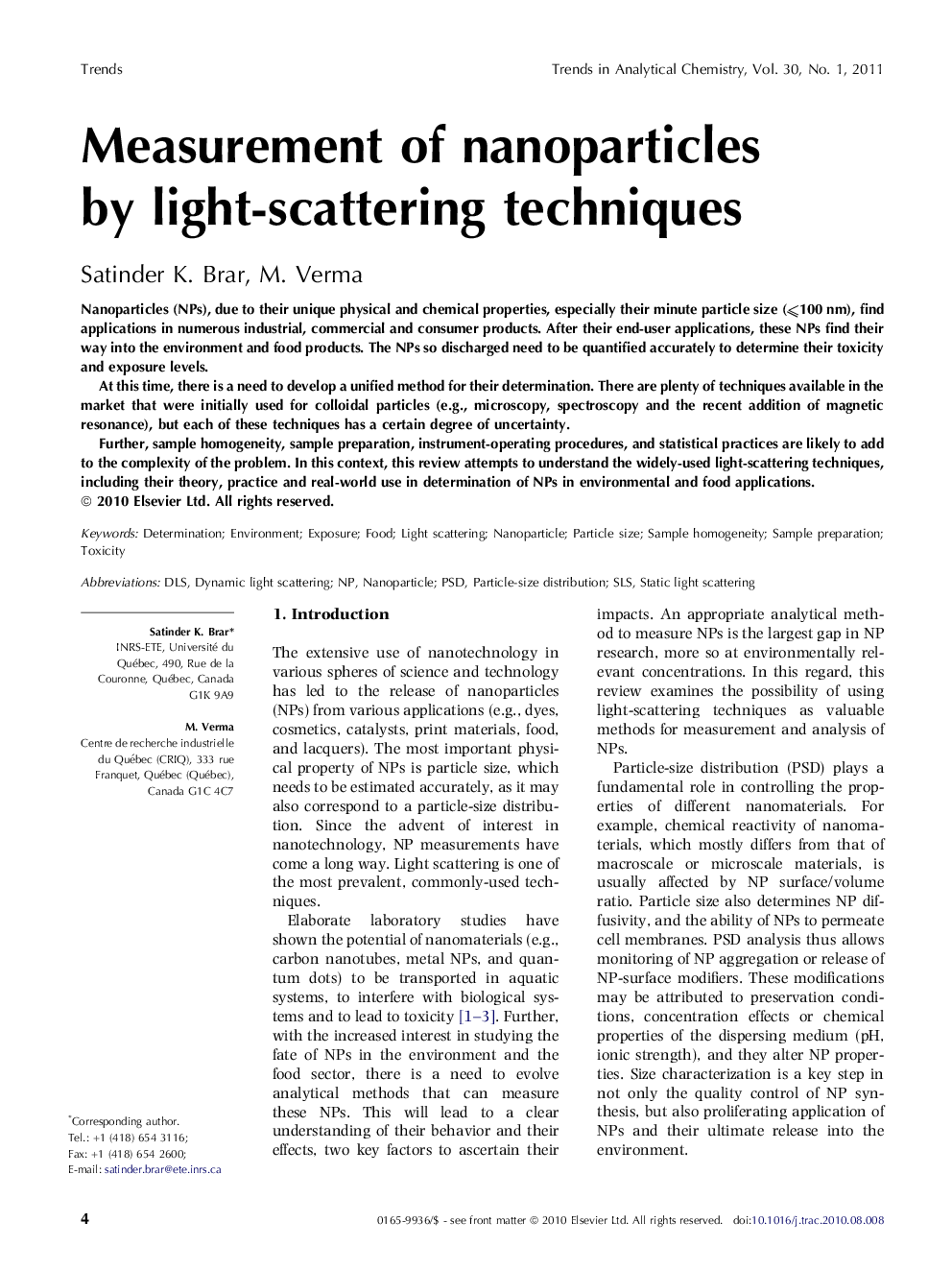| Article ID | Journal | Published Year | Pages | File Type |
|---|---|---|---|---|
| 1249280 | TrAC Trends in Analytical Chemistry | 2011 | 14 Pages |
Nanoparticles (NPs), due to their unique physical and chemical properties, especially their minute particle size (⩽100 nm), find applications in numerous industrial, commercial and consumer products. After their end-user applications, these NPs find their way into the environment and food products. The NPs so discharged need to be quantified accurately to determine their toxicity and exposure levels.At this time, there is a need to develop a unified method for their determination. There are plenty of techniques available in the market that were initially used for colloidal particles (e.g., microscopy, spectroscopy and the recent addition of magnetic resonance), but each of these techniques has a certain degree of uncertainty.Further, sample homogeneity, sample preparation, instrument-operating procedures, and statistical practices are likely to add to the complexity of the problem. In this context, this review attempts to understand the widely-used light-scattering techniques, including their theory, practice and real-world use in determination of NPs in environmental and food applications.
